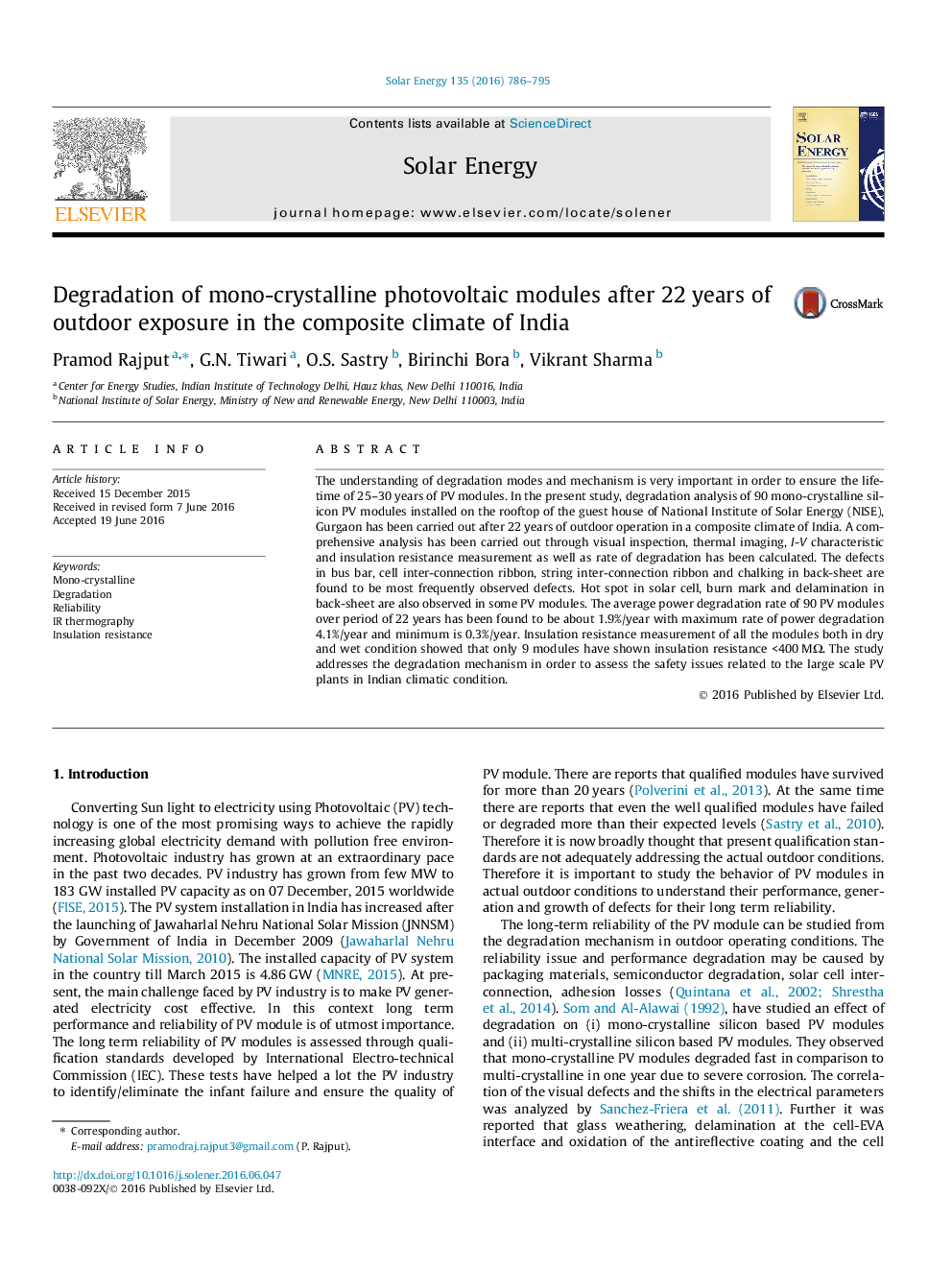| Article ID | Journal | Published Year | Pages | File Type |
|---|---|---|---|---|
| 7936910 | Solar Energy | 2016 | 10 Pages |
Abstract
The understanding of degradation modes and mechanism is very important in order to ensure the lifetime of 25-30 years of PV modules. In the present study, degradation analysis of 90 mono-crystalline silicon PV modules installed on the rooftop of the guest house of National Institute of Solar Energy (NISE), Gurgaon has been carried out after 22 years of outdoor operation in a composite climate of India. A comprehensive analysis has been carried out through visual inspection, thermal imaging, I-V characteristic and insulation resistance measurement as well as rate of degradation has been calculated. The defects in bus bar, cell inter-connection ribbon, string inter-connection ribbon and chalking in back-sheet are found to be most frequently observed defects. Hot spot in solar cell, burn mark and delamination in back-sheet are also observed in some PV modules. The average power degradation rate of 90 PV modules over period of 22 years has been found to be about 1.9%/year with maximum rate of power degradation 4.1%/year and minimum is 0.3%/year. Insulation resistance measurement of all the modules both in dry and wet condition showed that only 9 modules have shown insulation resistance <400 MΩ. The study addresses the degradation mechanism in order to assess the safety issues related to the large scale PV plants in Indian climatic condition.
Related Topics
Physical Sciences and Engineering
Energy
Renewable Energy, Sustainability and the Environment
Authors
Pramod Rajput, G.N. Tiwari, O.S. Sastry, Birinchi Bora, Vikrant Sharma,
